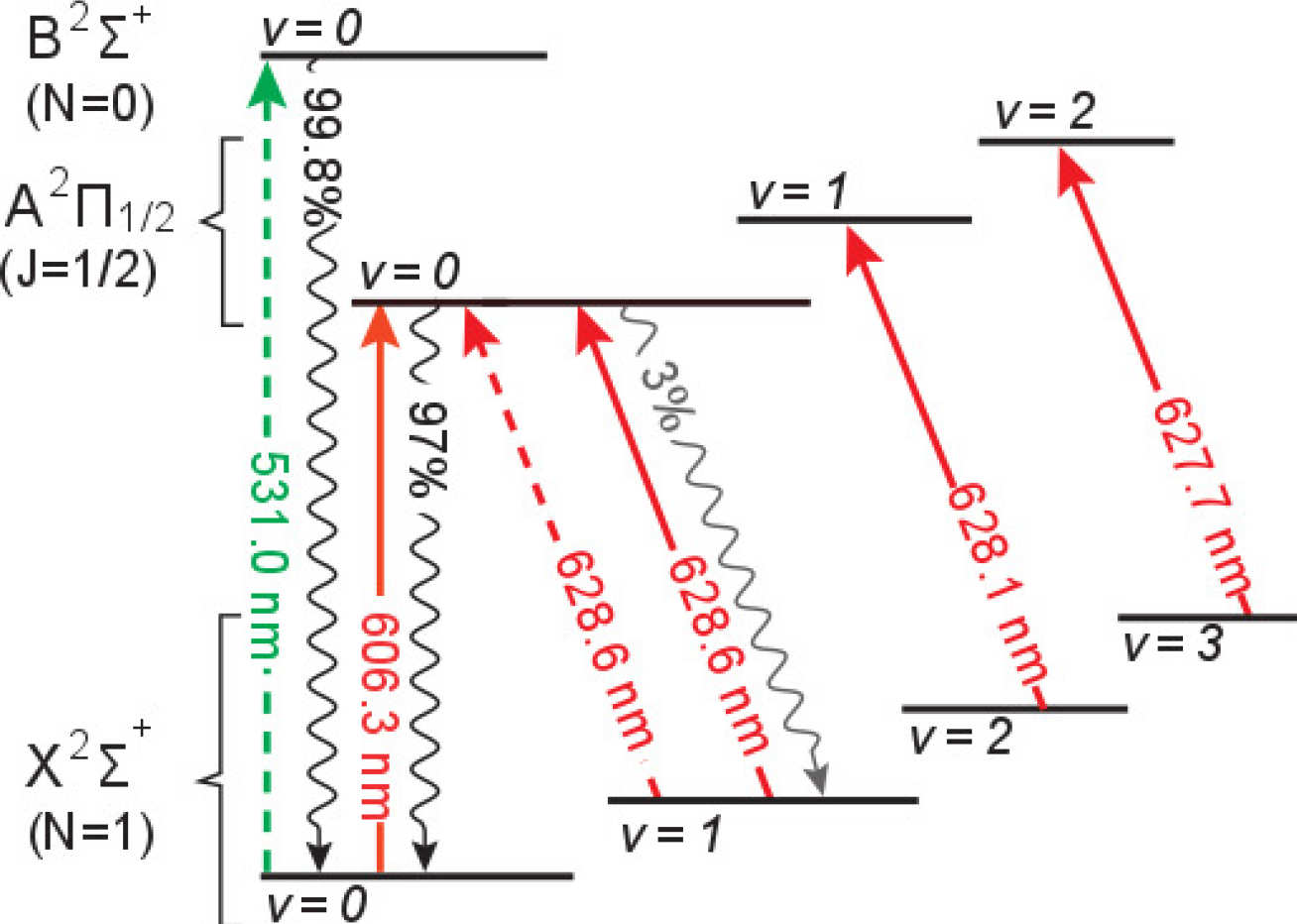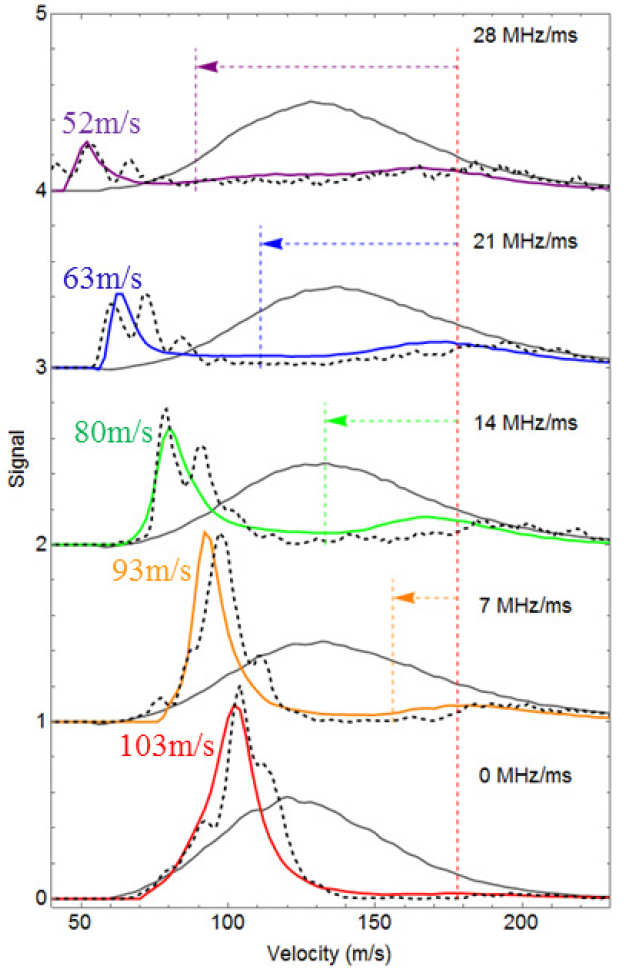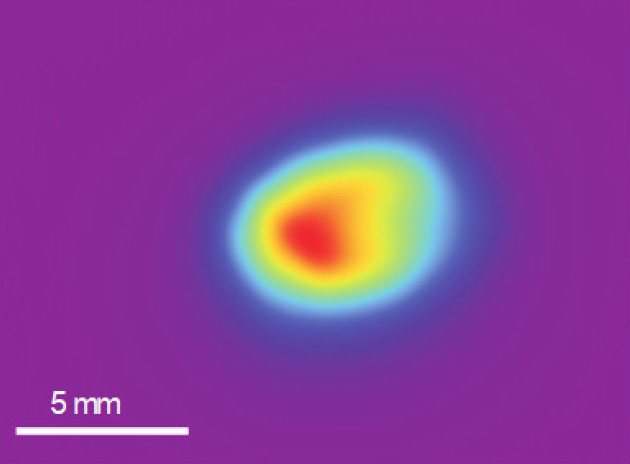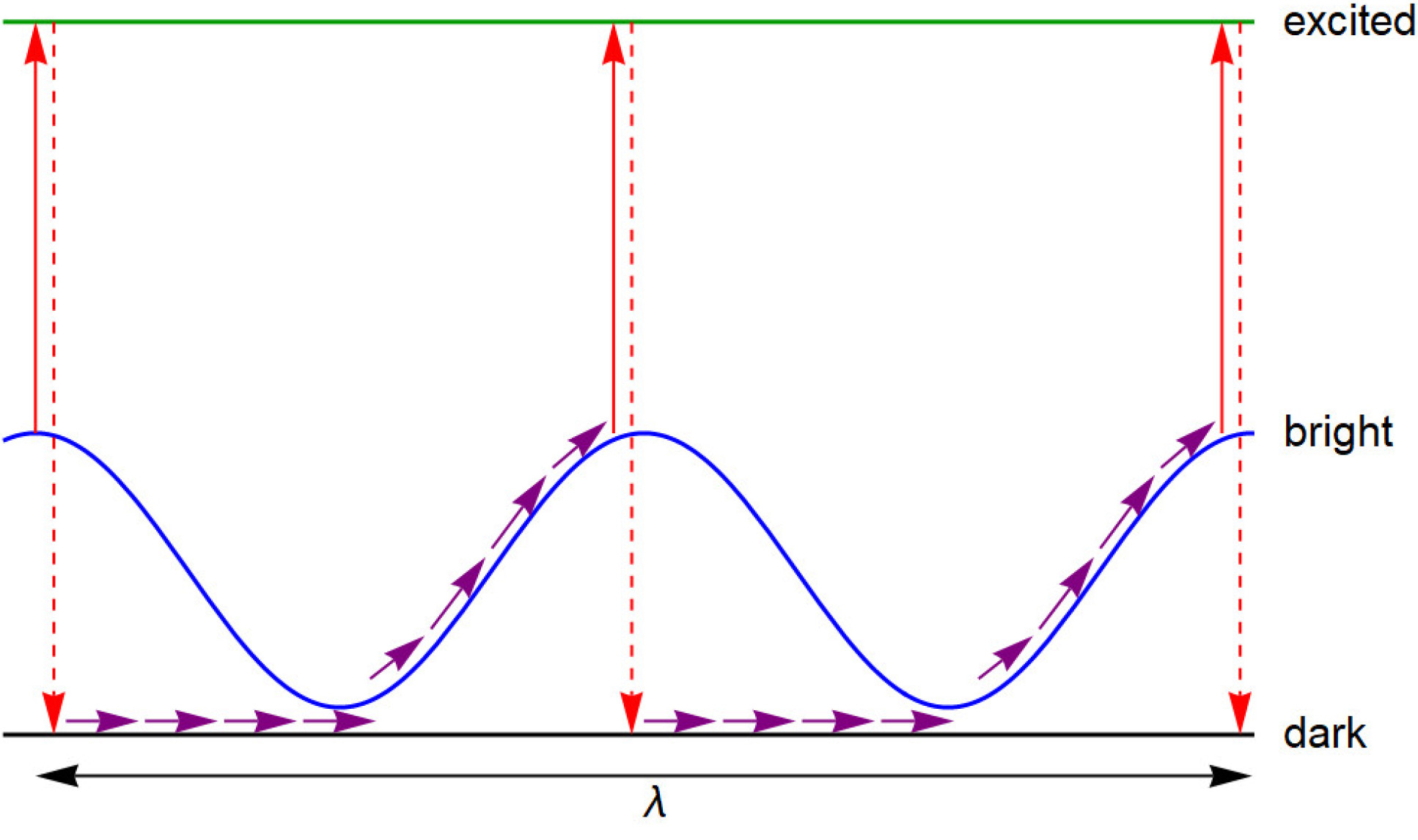
Laser Cooling and Magneto-Optical Trapping
- Concept
- Slowing and cooling a beam of CaF
- Magneto-optical trapping
- Laser cooling to a few microkelvin
- Magnetic trapping and coherent control
- Further reading
Concept
Slowing and cooling a beam of CaF
Magneto-optical trapping
Laser cooling to a few microkelvin
Magnetic trapping and coherent control
Further reading




 Once the molecules are trapped in the MOT, we use sub-Doppler cooling methods to cool them to ultracold temperatures. We have reached temperatures as low as 5 microkelvin this way. The images below show the ballistic expansion of an ultracold cloud of CaF molecules. Here, the temperature is about 50 microkelvin.
Once the molecules are trapped in the MOT, we use sub-Doppler cooling methods to cool them to ultracold temperatures. We have reached temperatures as low as 5 microkelvin this way. The images below show the ballistic expansion of an ultracold cloud of CaF molecules. Here, the temperature is about 50 microkelvin.
